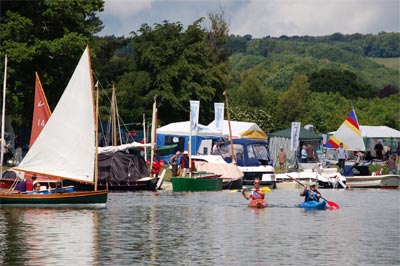
Nothing beats the fun and excitement of sailing as a hobby - but have you considered the impact of sailing on the environment?
Sailing is one of the most environmentally friendly pastimes, but it does have an impact on the sea.
We have put together a handy guide to help you think about Green Sailing. By taking a few simple steps, you can keep future costs of sailing down and sustain high quality water and local environments.
Fuel
Oil and fuels are the most frequently reported pollutant of inland waters in England and Wales. The majority comes from everyday sources like refuelling, engine emissions and oil leaks.
- Use a funnel when pouring fuel or oil
- Good maintenance of fuel lines, connections and seals helps avoid leaks
- A drip tray under the engine is a requirement on many waterways. If it starts getting oily, find and mend the leak!
Appreciate wildlife
In the UK we have an abundance of thriving wildlife. It is our responsibility as sailing enthusiasts to ensure that we do everything in our power to protect it.
- Slow down if you are creating excessive wash – it can erode banks, disturb nesting birds and damage sensitive vegetation
- Find out whether the areas you visit are protected, and why. There may be vulnerable seabed species, so beware of dragging your anchor
- Minimise the amount of soaps and detergents used in onboard sinks, showers and washing machines. Avoid using products which contain chlorine and bleach which are toxic to flora and fauna, phosphates which can encourage algal growth and triclosan. If you use cleaning products select environmentally sensitive ones.
Limit noise and exhaust fumes
Exhaust emissions are made up of carbon monoxide, hydrocarbons, nitrogen oxides and various pollutants. By 2011, the Government has specified that 5% of fuel must come from renewable sources like biodiesel.
- A badly maintained engine consumes more fuel and expels more emissions than a well maintained one, so ensure your engine has a regular service
- Fitting noise insulation around you engine can reduce airborne noise by up to 85% causing less disturbance to wildlife and making life on board more comfortable
- When buying a new boat for inland waterways, consider an electric powered craft. They have no exhaust emissions and are very quiet
Hazardous Waste
Incorrect disposal of waste is unnecessary – by using recycling facilities and reducing our waste, we are all contributing to a more environmentally friendly environment.
- Cigarette ends can harm birds and last up to 5 years. Smokers should keep a small tin in their pocket to stub out and keep butt ends.
- Invest in starch-based rubbish bags for short trips. They break down in 12-18 months rather than 20 years plus for regular plastic bags.
- Prevent plastic bags, drinks cans and loose items from blowing overboard. Remove excess packaging and recycle it at home.
Beware of alien species
Alien species are non-native species that have become established outside their normal habitat or native country. Fast-growing species like zebra mussels are already causing problems in many areas. They can block engine cooling water intakes resulting in engines over-heating.
- Clean all parts of the boat, trailer and equipment that come into contact with the water before leaving the water catchment. Remove any visible plant, fish, animal matter and mud.
- Do not run through water plants and weed if avoidable. If caught up on the hull or propeller they can be transferred to another area.
- Risks of acquiring invasive hitchhikers on the boat increase the longer the boat is kept in the water. Consider only keeping the boat in the water when it is needed.
It's vital that we all maintain a healthy respect for the sea and work together to protect our shores. If in doubt, remember the 3 R's…Reduce, Reuse and Recycle!